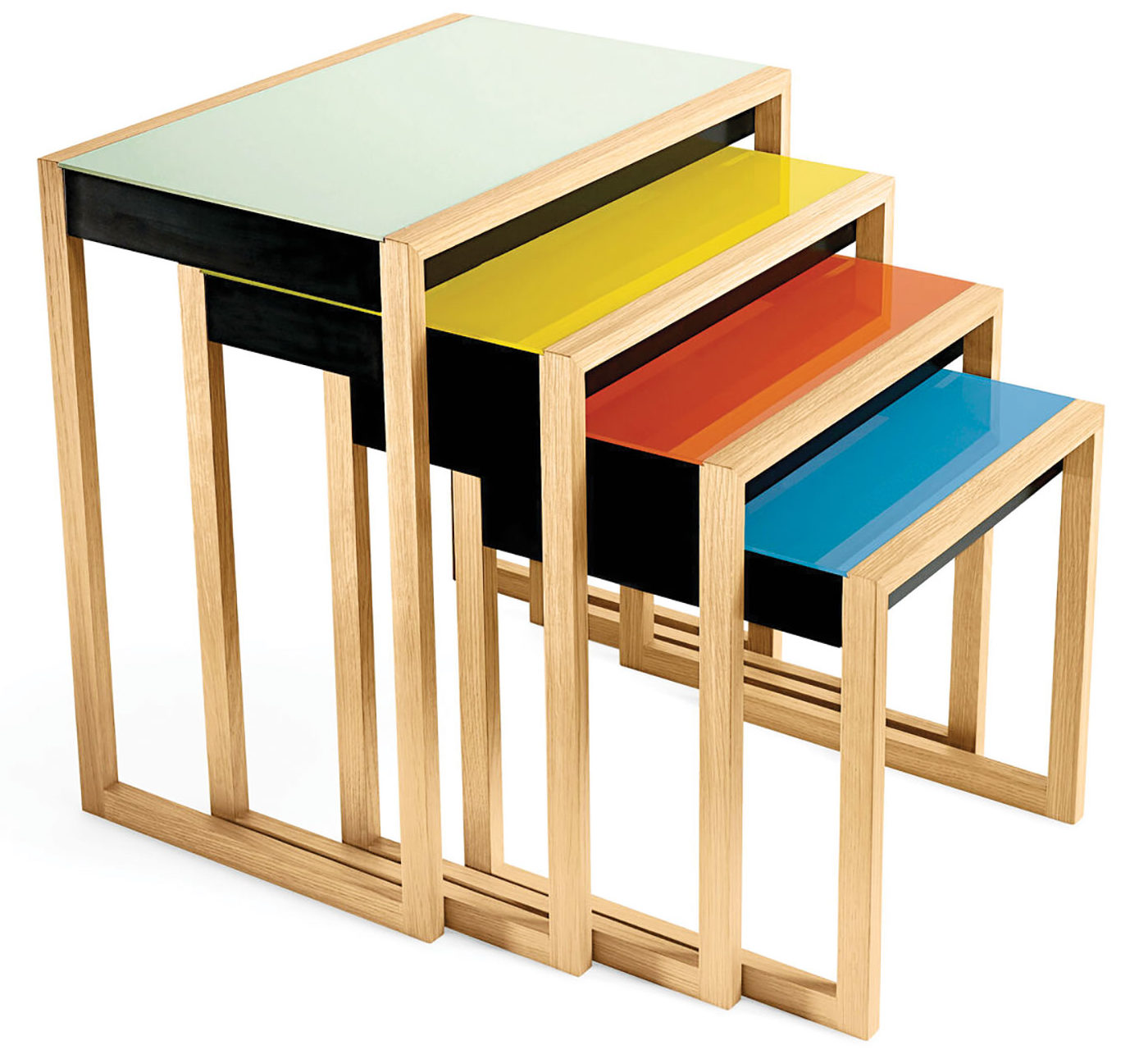Bauhaus Nesting Tables
Writer Ren MillerDelicate looking yet sturdy, simple yet colorful, these tables stand the test of time
You may remember nesting tables from your parents’ or grandparents’ midcentury modern home. The varied heights of these simple and durable tables allowed many uses, from playing board games to holding drinks to elevating tired feet for a long evening of watching television. At the end of the day, they were stacked one on top of the other and stored in a small space beside a chair or sofa.
In other words, these tables designed with flat planes, glass and wood construction, and space-saving attributes were perfect for midcentury homes designed with flat planes, glass and wood construction, and open spaces that left less space for furniture than architectural styles with more internal walls.
Except, nesting tables are no more midcentury modern than wing chairs. In fact, drawings for some designs date as far back as the early 1800s. Even the most recognizable design for nesting tables—by artist Josef Albers—predates the peak of midcentury modern furniture design by three decades.
……
Albers (1888-1976) was born in Germany and worked as an art teacher and printmaker before receiving his first public commission, a stained-glass window for a church, in 1918. In 1920 he enrolled at what became Bauhaus University in Weimar. (“Bauhaus” is generally understood in German to mean “school of building.”) He went on to design furniture and work with glass, including stained glass, while he taught at the school, but it all came to an end when the Bauhaus closed under Nazi pressure in 1933. Albers and his wife, Anni, a textile and printmaker, moved to the United States, where he taught first at the Black Mountain College in North Carolina and later at Yale University in New Haven, Connecticut, where he headed the department of design. He wrote the influential book Interaction of Color, not surprising with his background as a painter and stained-glass designer, and continued to teach, paint and create decorative designs for architects (think distinctive fireplaces, building facades and structural art pieces).
Although Albers is known most for his work as an abstract painter and theorist, he is remembered also for his Bauhaus Nesting Tables, which he designed while serving as artistic director of the furniture workshop at the Bauhaus in 1926-1927. Albers designed the set of four tables for the Berlin apartment of his and his wife’s closest friends. The simple oak frame and legs are slender but strong and are engineered to fit perfectly under the next larger size. The glass tops are lacquered on the underside in Albers-specified shades of minty green, yellow, orange and blue.
The tables are available today through a partnership with the Josef and Anni Albers Foundation and the MoMA Design Store in New York City. They are crafted in Germany and sell for $1,705.50 for members of the Museum of Modern Art and $1,895 for non-members. Store.MoMA.org.
Josef Albers, an artist with a passion for color, created these very contemporary-looking nesting tables almost a century ago.

